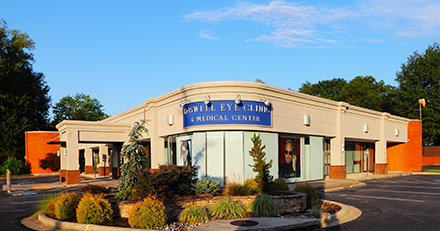LASIK & PRK
LASIK (Laser-Assisted in Situ Keratomileusis)
LASIK is the most popular refractive surgery available today. Each year, more than one million LASIK procedures are performed in the United States. LASIK has become the premier surgery for vision correction because it’s quick and painless and vision recovery is rapid. Some patients even see 20/20 the following day.
LASIK can correct myopia (nearsightedness) and astigmatism. With a special technique called monovision, it can also reduce the need for reading glasses among patients over age 40 with Presbyopia.
Most people achieve 20/20 vision after the procedure.
Am I a Good Candidate for LASIK?
To be a good candidate for LASIK, you should be at least 18 years old, have a stable prescription and have adequate corneal thickness since LASIK corrects your vision by removing tissue from your cornea to reshape your eye.
Chronic dry eye problems, corneal diseases and other abnormalities may disqualify you from having LASIK surgery. In order to know for sure if you are a good candidate, a comprehensive eye exam is required. We provide LASIK pre-operative and post-operative exams and consultations at our office.
If you wear contact lenses, you need to stop wearing them at least one week before your LASIK pre-op as contacts can change the natural shape of your cornea
The LASIK Procedure
First the doctor creates a thin, hinged flap of tissue on the cornea. After the flap is made and folded back, the excimer laser reshapes the cornea. After the excimer laser treatment, which usually takes less than a minute, the flap is repositioned and the surgeon moves on to your other eye.
There are two ways to create the flap. Historically, the flap was created with a blade called a microkeratome. LASIK using a microkeratome has increased complications and is less predictable than newer methods that use a femtosecond laser to create the corneal flap.
An excimer laser is used to precisely reshape the curvature of your cornea’s surface. This computer-controlled, highly specialized laser delivers pulses of cool ultraviolet light that remove microscopic amounts of tissue in a precise pattern.
What Is Wavefront LASIK?
Wavefront LASIK (also called wavefront-assisted, wavefront-guided or custom LASIK) means the excimer laser treatment (or “ablation”) is determined by a computerized mapping of the power of your eye called wavefront analysis. Wavefront-guided procedures are more precise than ablations determined by using only an eyeglasses prescription, and they can correct subtle optical imperfections of the eye called “higher-order aberrations” that regular ablations can’t treat. Several studies show wavefront-guided ablations provide sharper vision than conventional, non-wavefront LASIK and may reduce the risk of nighttime glare and halos.
After LASIK Surgery
After the procedure, your surgeon will apply medicated eye drops and clear protective shields over your eyes. You can open your eyes and see well enough to walk without glasses, but you must have someone drive you home.
You will be expected to use medicated eye drops several times a day for about a week to protect your eyes from infection and help them heal properly. You will also be told to use preservative-free artificial tears frequently to keep your eyes hydrated and comfortable.
You should rest and not use your eyes much when you get home from surgery. You may also be more comfortable if the lights in your house are dimmed.
The following day, you will come to our office for a post-op visit. You should be seeing well enough to drive and can resume most activities. Be careful not to rub your eyes.
If you are dissatisfied with your vision after your eyes have healed fully, you may elect to have a follow-up (“enhancement”) procedure to further sharpen your eyesight.
What if My Vision Is Still Blurry After Lasik?
Though most patients see quite clearly in a matter of days after LASIK, it can take several months before your eyes are completely stable. Until then, improvements in your vision can still occur. But if several months pass and your vision is still blurred a second LASIK surgery (called an enhancement) can sharpen your eyesight further.
If for some reason an enhancement is not indicated or desired, eyeglasses or contact lenses may help. We will be happy to examine your eyes and discuss the different options with you.
PRK (Photorefractive Keratectomy)
PRK was the first type of laser eye surgery for vision correction and is the predecessor to LASIK. Though PRK recovery takes a bit longer than recovery from LASIK, PRK is still commonly performed.
Like LASIK,PRK works by reshaping the cornea using an excimer. The main difference between PRK and LASIK is the first step of the procedures. In PRK, the thin outer layer of the cornea (epithelium) is removed and discarded prior to reshaping the underlying corneal tissue with an excimer laser. The epithelium repairs itself (grows back over the corneal surface) within a few days after surgery.
PRK and LASIK have comparable outcomes. However, initial PRK recovery is slower because it takes a few days for new epithelial cells to regenerate and cover the surface of the eye. LASIK patients generally have less discomfort, and their vision stabilizes more quickly, whereas vision improvement with PRK is gradual and the final outcome can take several weeks.
Because PRK surgery does not create a corneal flap (which contains both epithelial and the deeper stromal tissues), the entire thickness of the underlying stroma is available for treatment.
This is of particular benefit if the cornea is too thin for LASIK or if you have undergone LASIK previously and therefore have a thinner residual cornea. There also is no risk of flap complications, and the risk of removing too much of the cornea with the excimer laser is reduced.
The PRK Procedure
First, your eye surgeon removes a central area of corneal epithelium with an alcohol solution, a “buffing” device or a blunt surgical instrument.
A “bandage” soft contact lens is then placed on the cornea to help protect your eye. New epithelial cells grow back in about four or five days, after which the bandage contact lens is removed by your eye doctor.
PRK recovery takes longer than recovery from LASIK surgery. It may be days or a couple of weeks before your eyesight improves, and even longer for your vision to stabilize completely.
Our LASIK & PRK Specialists: Dr. Emily Felouzis, Dr. Sarah Flangan, Dr. Michelle Moscow, Dr. Scott Moscow, Dr. William “Billy” Moscow, Dr. Ashleigh Sprouse


